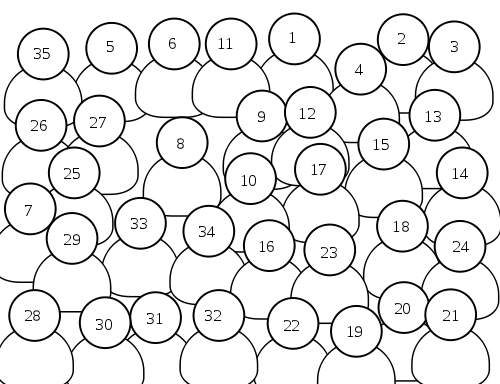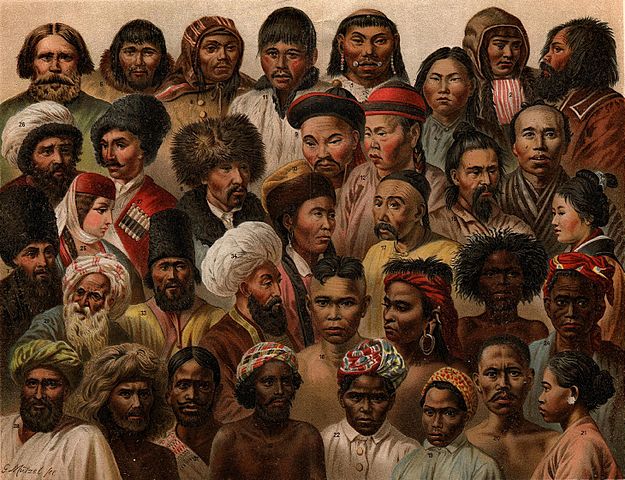 |
This is a file from the Wikimedia Commons. Information from its description page there is shown below.
Commons is a freely licensed media file repository. You can help.
|
| Description |

Svenska: Asiatiska folk
1. Tsjuktsjer. ( Chukchi people)
2. Kamtsjadal. ( Itelmens or Kamchadal)
3. Aino. ( Ainu people)
4. Giljakiska. ( Nivkh people or Gilyak)
5. Samojed. ( Samoyedic peoples)
6. Ostjak. ( Ostyak peoples)
7. Tatar. ( Tatars)
8. Kirgis. ( Kyrgyz people)
9. Burjät. ( Buryats)
10. Kalmuckiska. ( Kalmyk people)
11. Tungus. ( Tungusic peoples)
12. Golder. ( Nanai people, formerly known as Golds or Samagir)
13, 14. Japan och japanska. ( Japanese people or Yamato people)
15. Korean. ( Koreans)
16. Lao. ( Lao people)
17. Kines. ( Chinese people)
18. Negrito. ( Negrito peoples)
19. Bataviska. ( Betawi people, named after Batavia, Dutch East Indies)
20. Javan. ( Javanese people)
21. Sundanska. ( Sundanese people)
22. Bata (Sumatra). ( Batak people)
23. Dajak (Borneo). ( Dayak people)
24. Inföding på Celebes. (Indigenous people of Sulawesi or Celebes)
25. Georgiska. ( Georgian people)
26. Tsjerkess. ( Adyghe people or Circassians)
27. Kabardin. ( Kabarday or Kabardin people)
28. Arab. ( Arab people)
29. Jude. ( Jews)
30. Vedda (på Ceylon). ( Vedda people)
31. Singales. ( Sinhalese people)
32. Indier. ( Indian people)
33. Perser. ( Persian people)
34. Belutsjer. ( Baloch people)
35. Kosack. ( Cossacks)
|
| Date |
|
| Source |
Nordisk familjebok (1904), vol.2, Asiatiska folk (the colour version is available in this zip-archive).
Nordisk Familjebok has credited the image to Bibliographisches Institut, Leipzig. |
| Author |
G. Mülzel |
Permission
( Reusing this file) |
| Public domainPublic domainfalsefalse |
 |
This image was first published in the 1st (1876–1899), 2nd (1904–1926) or 3rd (1923–1937) edition of Nordisk familjebok. The copyrights for that book have expired and this image is in the public domain.
|
|
|
File usage
The following pages on Schools Wikipedia link to this image (list may be incomplete):
Wikipedia for Schools is one of SOS Children's many educational projects. SOS Children's Villages believes education is an important part of a child's life. That's why we ensure they receive nursery care as well as high-quality primary and secondary education. When they leave school, we support the children in our care as they progress to vocational training or higher education. There are many ways to help with SOS Childrens Villages.





